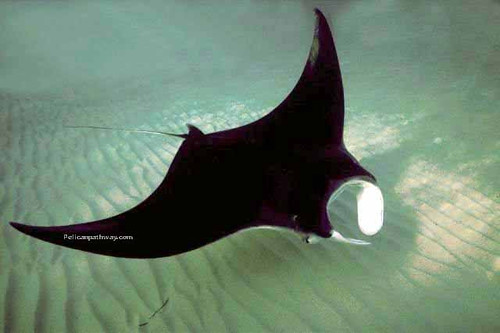For the past few years, Douglas McCauley has been tracking Pacific manta rays that live around a chain of remote islands called Palmyra Atoll. McCauley, a marine biologist at the University of California at Berkeley, and his colleagues tag the giant fishes with “pingers” — acoustic devices that emit pulses — and then follow the sound. “You’re in a boat, following the animal night and day,” says McCauley.
The scientists embarked on this study to learn more about the ecology of these majestic animals. “There’s remarkably little known about manta rays,” McCauley says. Pacific manta rays are among the biggest fishes in the world, with wing-like fins that can stretch as far as nine meters across. To feed their massive bodies, they suck water into their mouth and out of their gills, trapping tiny animals in a filter-like mesh of bones. Any changes to the ocean food web — a rise in temperature or a drop in nutrient levels, for example — can influence the size of the manta ray population.As the scientists followed the manta rays, they noticed something peculiar. Off in the distance, they could see Palmyra’s island chain. Much of Palmyra is still covered by forests of native trees. But there are also stretches of the island dominated by coconut palms — first brought by Polynesians centuries ago and increasingly planted today as a cash crop. As McCauley gazed off at the islands, it occurred to him that he was spending all his time off the coast of the native forests.
“We were puzzled that we kept being brought back to these coastlines with abundant native forests,” says McCauley. “We realized that maybe to understand the manta rays, we had to follow this message they were giving us.” More
Destroying mangrove forests is adversly affecting the nutrient balance in the Cayman Islanda. Editor

